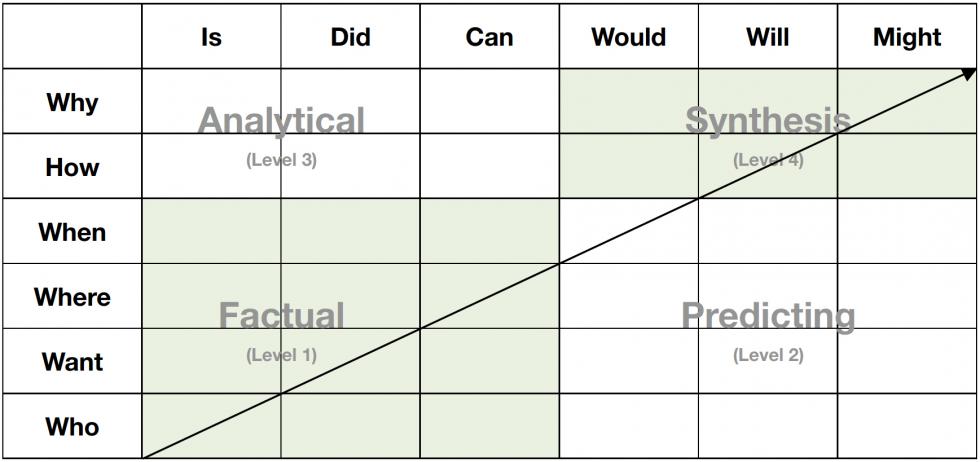Raise the Rigor
Strategies to Promote Reading Comprehension
As a middle grades social studies teacher in Florence School District 1 — an area of South Carolina along I-95 known as the “Corridor of Shame” for its poverty and low-performing students — I have a theory. I believe all students benefit from rigorous, literacy-based classroom instruction, and students from poverty benefit the most. The ability to read and understand complex texts is the best way to distinguish students who are college and career ready from those who are not.
Remember, rigor doesn’t mean hard. Rigor means challenge.
I use a variety of research-based questioning strategies to improve my students’ reading comprehension, to challenge the high-achieving students and help the lower-achieving ones succeed. The Q-Chart (below) ensures that my questions are rigorous and don’t rely on low-level thinking for answers. “Who might have been responsible for the plan’s failure?” is a higher-order question, for example, than “Who is the author of the novel?” I want to consistently set high expectations and increase cognitive load by using the three C’s of questioning: cold calling, chill time and no call outs.
One of my favorite three-C strategies is called pose, pause, pounce and bounce. A teacher poses a question to the class about the reading but doesn’t allow anyone to call out an answer. Instead, she gives students at least seven seconds of “chill time” to think. One of the rules is that students may not answer any question with “yes,” “no” or “I don’t know.” The pause after the question gives them an opportunity to think and think again.
If students are really captivated by the question, a teacher may extend the reflective time before pouncing (calling on a specific student). In most such activities, students are free to stop thinking when someone else answers a question, but not with PPPB. After the called-out student answers and the teacher engages him on the topic, she bounces to another student and asks his opinion of the first student’s response. The teacher continues to bounce from student to student with probing questions until she has assessed that everyone understands the reading.
Despite that word “pounce,” questioning should never be used to humiliate an unprepared student. Instead, the probing questions and time for reflection give every student a chance to engage in productive thought and conversation. And it’s working. Student engagement and scores on the South Carolina PASS exam increased after I began using the literacy-based lessons.
I was trained in the instructional strategies of the Literacy Design Collaborative, so I know how important reading comprehension is. In fact, believe it determines which students will be successful in college and careers. Many of the reading and questioning strategies I use in my classroom come from the LDC CoreTools website, a clearinghouse of teacher-designed instructional modules and mini-task assignments, all literacy based. Learn more about LDC professional development.



